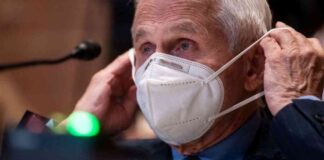Apple Watch Revolutionizes Health Monitoring with New Sleep Apnea Detection Feature
Are you tired of waking up exhausted despite getting a full night’s sleep? You may be one of the millions of individuals unknowingly living with sleep apnea. However, there is good news on the horizon. Apple has recently unveiled a groundbreaking feature that could help you uncover this hidden health issue right from your wrist.
If you are the proud owner of an Apple Watch Series 10, 9, or Ultra 2, you will soon have a personal sleep detective right on your arm. This innovative feature utilizes the watch’s built-in technology to monitor your breathing patterns while you sleep, searching for signs that may indicate the presence of sleep apnea. Gone are the days of complex sleep studies and expensive equipment; your everyday smartwatch could hold the key to identifying this common yet often undiagnosed condition.
How the Sleep Apnea Detection Feature Works
The sleep apnea detection feature on the Apple Watch leverages the device’s built-in accelerometer to monitor a new metric known as “breathing disturbances” during your sleep. By analyzing these disturbances over time, the watch can pinpoint patterns consistent with moderate to severe sleep apnea.
FDA Approval and Global Availability
Excitingly, the U.S. Food and Drug Administration (FDA) has given its stamp of approval to this innovative sleep apnea feature, marking a significant milestone in wearable health technology. Apple plans to introduce the functionality in over 150 countries and regions, including the United States, Europe, and Japan.
User Experience and Data Analysis
Users can access their nightly breathing disturbance data in the Health app on their iPhone, where it will be categorized as either “elevated” or “not elevated.” The watch analyzes this data over a 30-day period and notifies users if it detects consistent signs of sleep apnea.
Performance Metrics and Validation
In clinical validation studies, the notification performance of the feature achieved a sensitivity of 66.3% and a specificity of 98.5%. This means that the algorithm is effective at identifying individuals with moderate to severe sleep apnea while minimizing false positives, ensuring the reliability of the notifications received.
Potential Impact on Public Health
Dr. Sumbul Desai, Apple’s vice president of health, underscored the rigorous development process behind this feature. The detection algorithm was developed using advanced machine learning techniques with extensive datasets from clinical-grade sleep apnea tests. These studies encompassed a diverse range of participants across various demographics and evaluated sleeping environments both at home and in a lab.
This new feature has the potential to significantly impact public health by aiding in the identification of undiagnosed cases of sleep apnea. Research indicates that up to 80% of sleep apnea cases go undiagnosed, making this tool invaluable for many individuals who may not exhibit obvious symptoms.
Setting Up Sleep Apnea Notifications on Your Apple Watch
To utilize the new sleep apnea detection feature on your Apple Watch, follow these steps:
1. Update your devices to the latest software versions for both your Apple Watch and iPhone.
2. Set up sleep apnea notifications in the Health app on your iPhone by following the prompts provided.
3. Wear your Apple Watch to bed for at least 10 nights within a 30-day period and ensure it is sufficiently charged before bedtime.
4. After the initial evaluation period, check the Health app for any notifications and review your breathing disturbances data.
Conclusion
The advent of the sleep apnea detection feature on the Apple Watch represents a significant leap forward in health monitoring technology. By empowering users to monitor their breathing patterns while they sleep, this feature has the potential to uncover underlying health issues that may have otherwise gone unnoticed. It is crucial, however, to consult with a healthcare provider if you receive a notification of possible sleep apnea for proper evaluation and diagnosis.
The integration of wearable technology like the Apple Watch for health monitoring purposes opens up a world of possibilities for proactive health management. While these advancements are exciting, considerations around privacy and accuracy remain valid concerns. Share your thoughts on using wearable technology for health monitoring and stay informed about the latest tech tips and security alerts by subscribing to the CyberGuy Report Newsletter.
With the Apple Watch leading the charge in health innovation, the future of personalized health monitoring looks brighter than ever. Embrace these advancements, consult with healthcare professionals when needed, and embark on a journey towards a restful night’s sleep and a healthier life.
Remember, your health is your most valuable asset, and technology is here to support you in safeguarding it. Stay informed, stay proactive, and make the most of the incredible tools at your disposal for a healthier tomorrow.

















